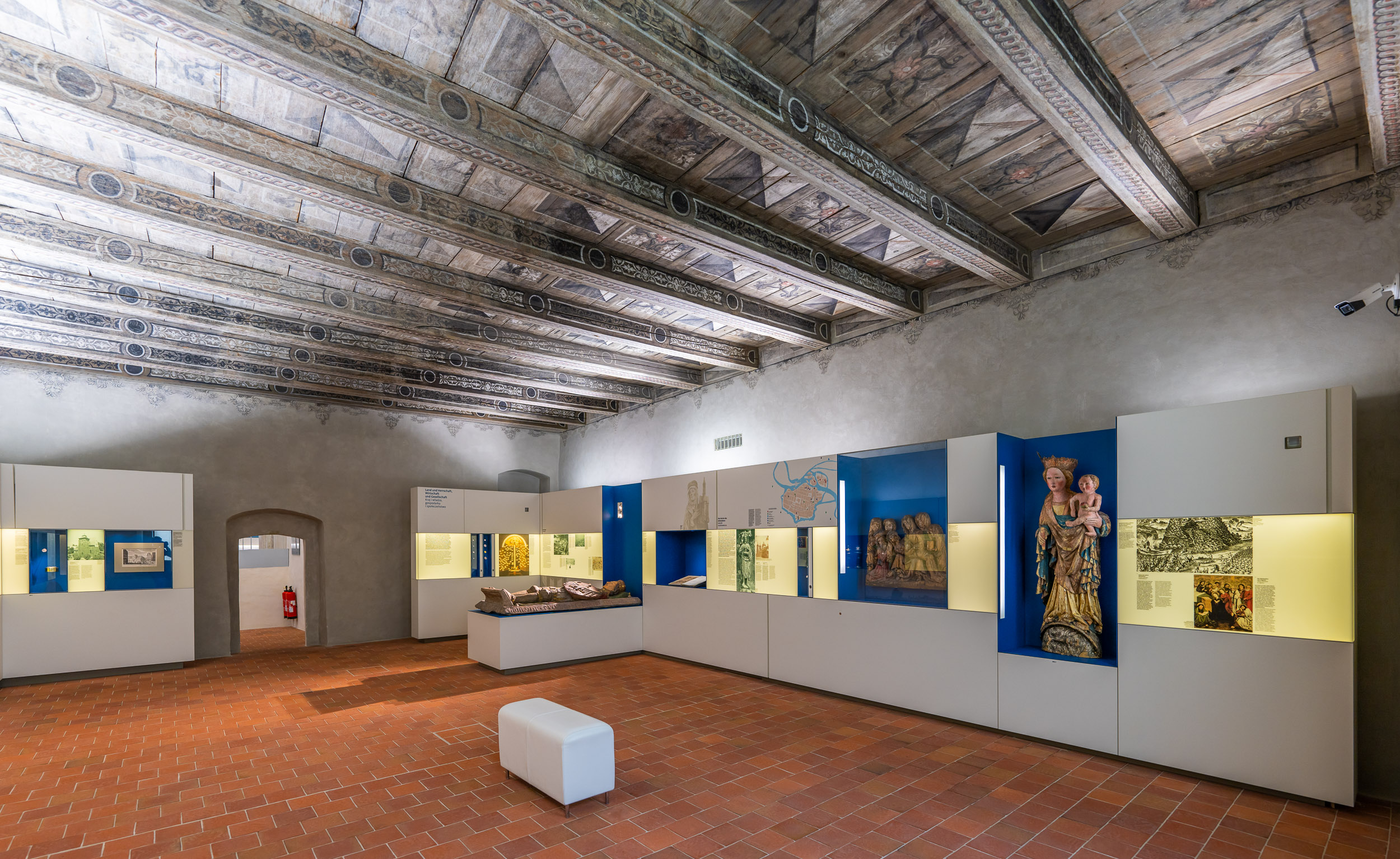
Tomb slab of Henry VI.
Photographs
3D Models
The last Piast Duke of Wroclaw
The remains of Henry VI, the last Duke of Wrocław, who descended from the Silesian Piasts and reigned from 1311 to 1335, lie in a sandstone tumba beneath the original of this tomb slab in the Ursuline Monastery in Wrocław. A cast of the tomb slab made of artificial resin is on display in the Silesian Museum. The duke was also known as Henry the Good.
24 November 1335 was a day of mourning in Breslau. Duke Henry VI of Silesia had died – but no son followed his coffin as it was carried to the princely burial place in the church of the monastery, which was run by Poor Clares at the time and has been run by Ursulines since the late 17th century.
The figure on the tomb slab shows the deceased prince life-size, in full armour and with a fresh complexion. His smile expresses the fact that the deceased has seen Christ and attained eternal life. The colour scheme dates from the 19th century, but the original painting was probably similarly colourful.
The Piasts shaped the history of Silesia like no other dynasty. Princes from this widely ramified dynasty ruled over Poland and, from the end of the tenth century, also over Silesia. They opened Silesia to the west and recruited German settlers. In order to preserve their independence, they separated themselves from the Polish state around 1300 and transferred their territories to the King of Bohemia as fiefdoms.
Henry VI did the same. When he died without heirs, the Duchy of Wrocław passed from Poland to the Bohemian crown. In other parts of Silesia, the Piasts continued to rule for a long time. The last of this dynasty died in 1675.
See similar attractions!
On a 2000 m2 exhibition space, visitors can explore approximately 1000 exhibits from the history of Silesian culture.
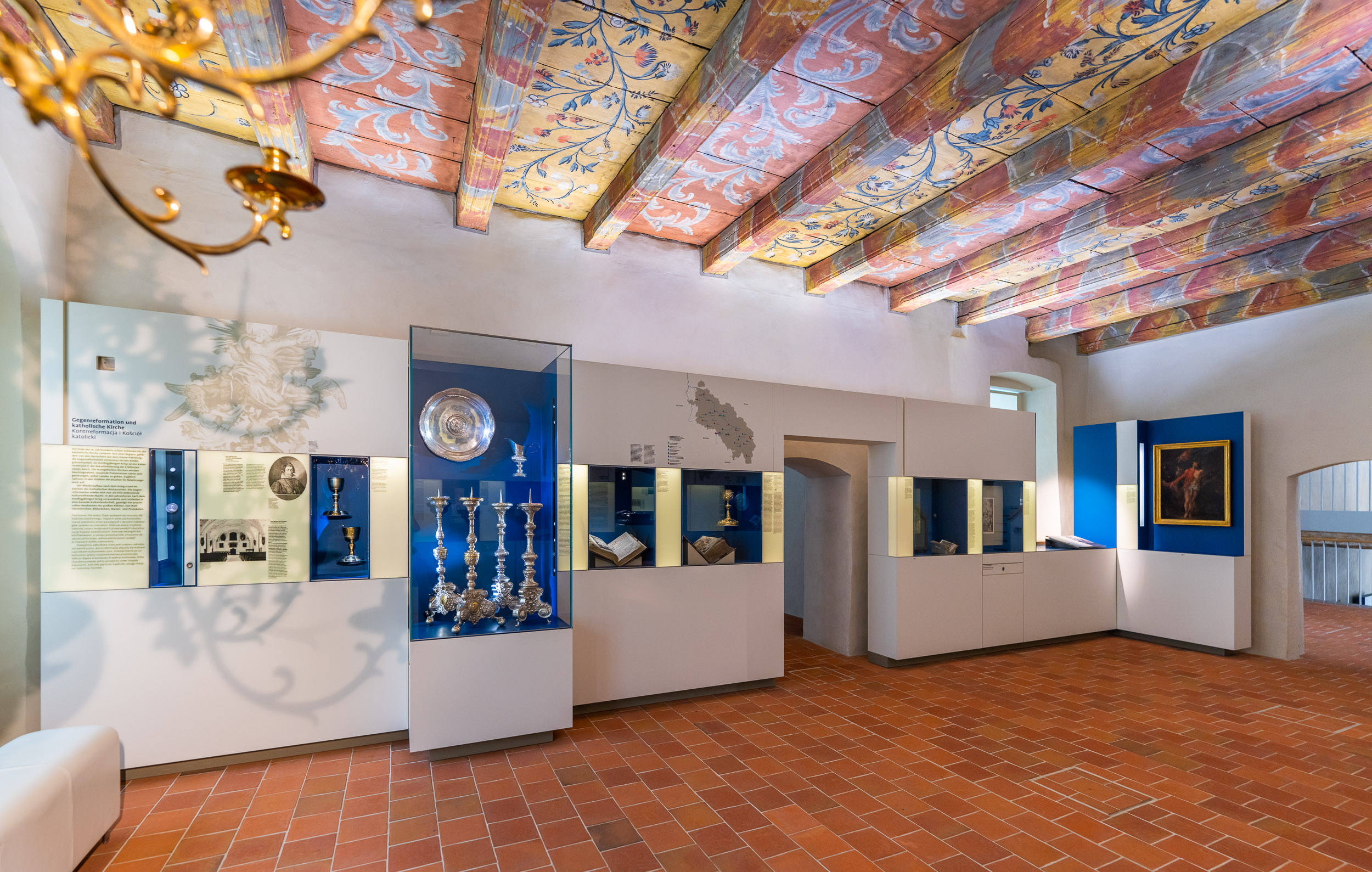)
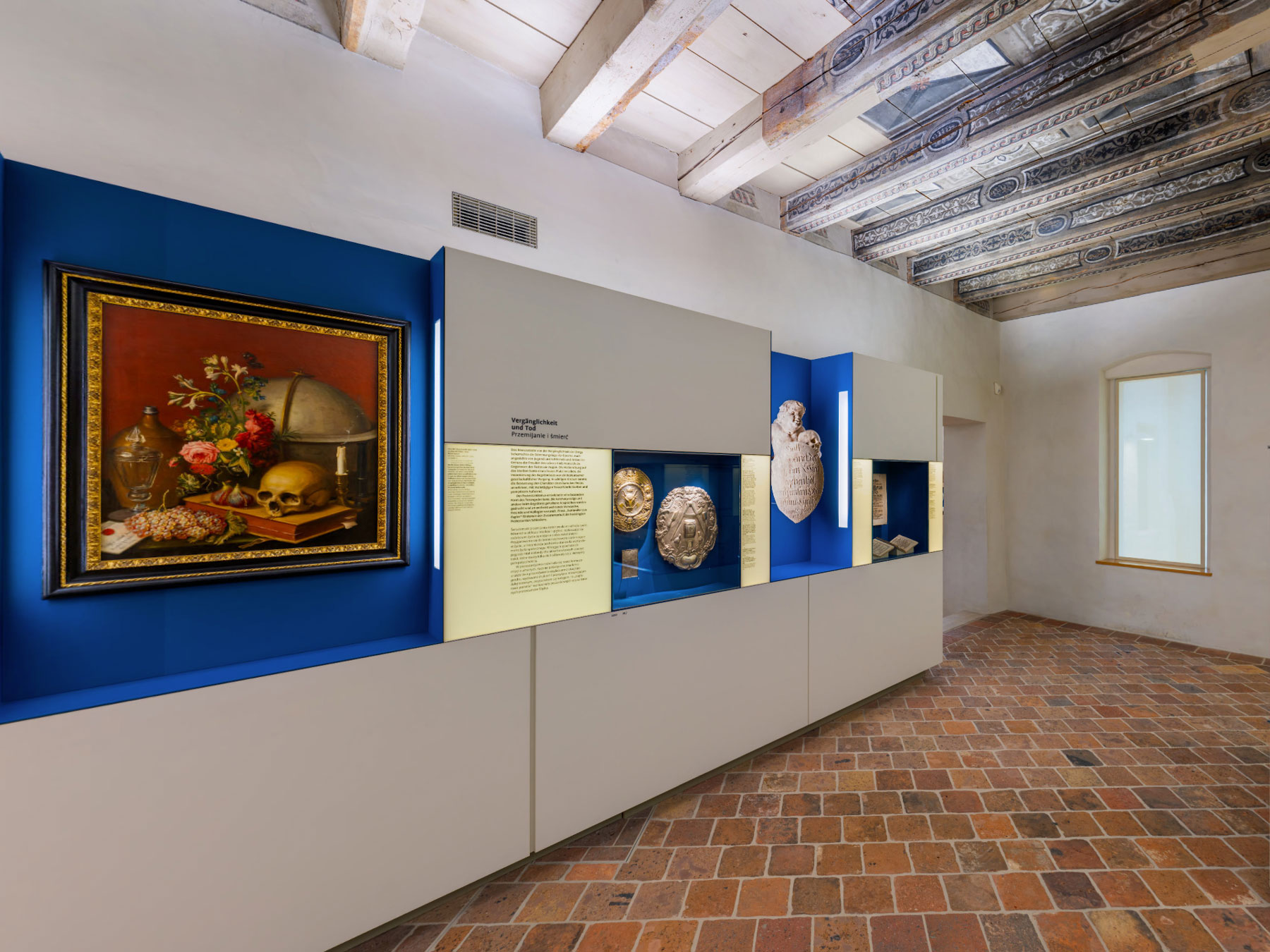)
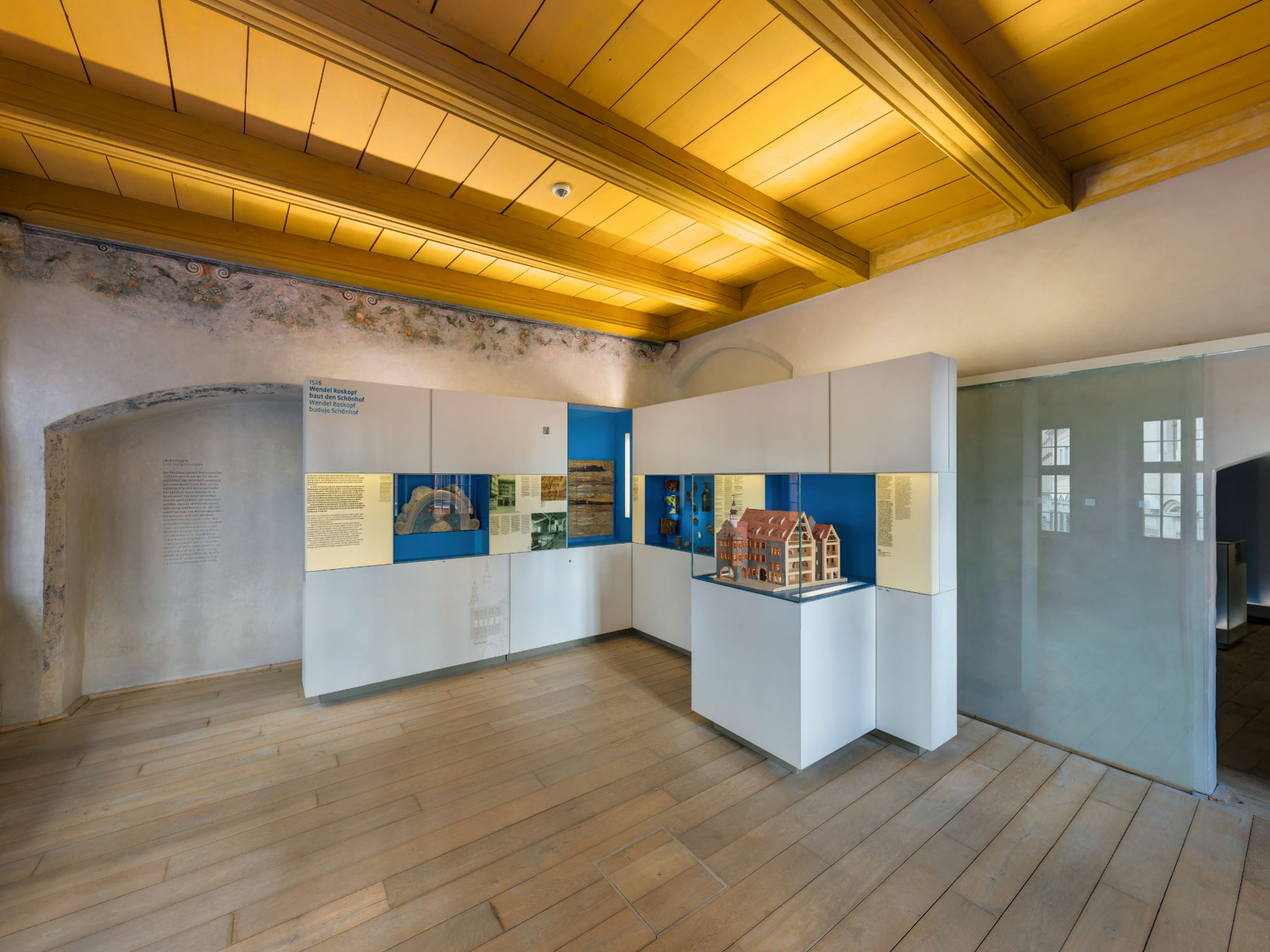)
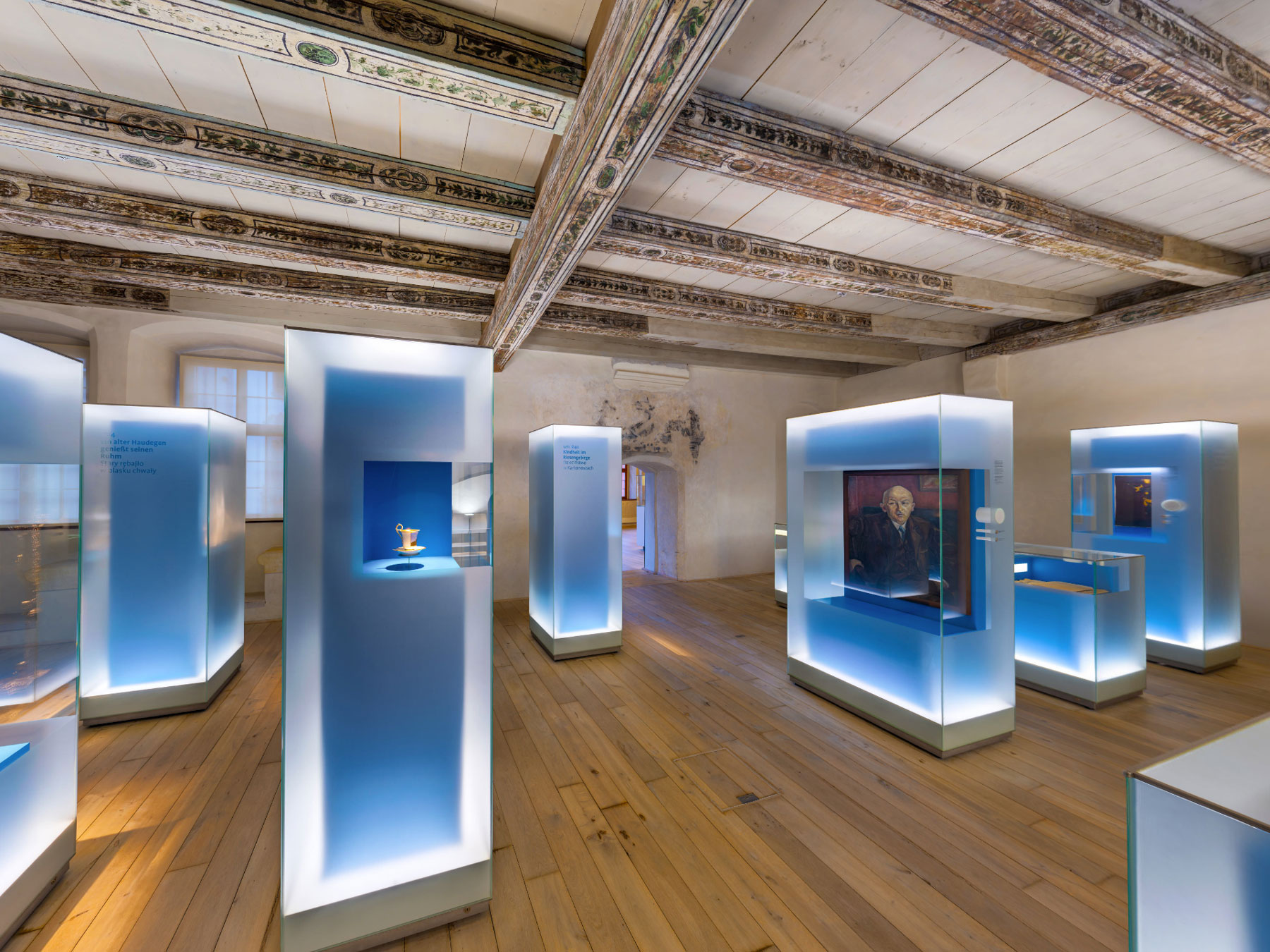)